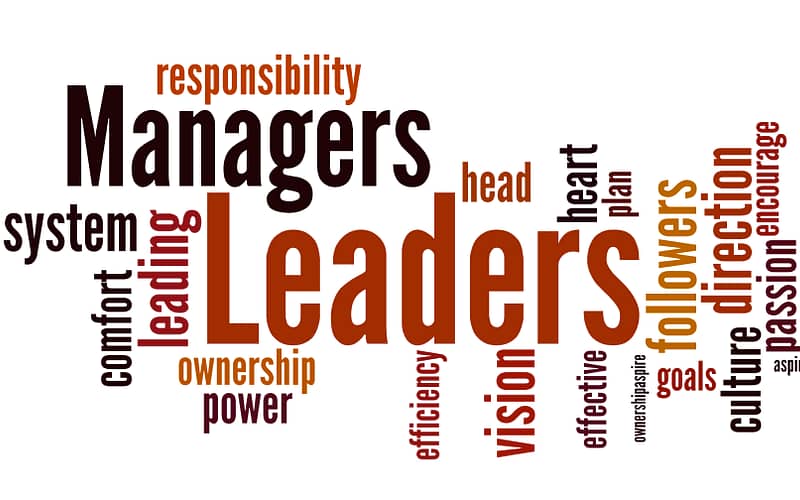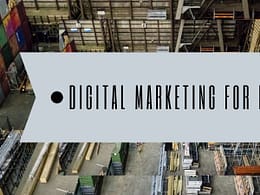Poor Customer support can have a serious negative impact on a business in a number of ways, including:
- Loss of customers: Disgruntled customers are more likely to take their business elsewhere, and they’re likely to tell their friends and family about their bad experience. In fact, studies show that after one poor customer service experience, a high percentage of customers (around 91%) are likely to switch to a competitor.
- Damaged reputation: Negative word-of-mouth travel fast, especially online. A few bad reviews from unhappy customers can damage a business’ reputation for a long time.
- Loss of sales: If customers are unhappy with the service they receive, they’re less likely to buy from the business again. This can lead to a decline in sales and profits.
- Decreased customer lifetime value: It’s more expensive to acquire new customers than it is to retain existing ones. So, when a business loses customers due to bad service, it’s losing out on the potential for future sales.
- Increased costs: There are a number of hidden costs associated with bad customer service, such as the cost of training new employees to replace those who have left due to a stressful work environment and the cost of responding to customer complaints.
- Lower employee morale: Employees who have to deal with angry customers on a regular basis are more likely to be stressed and unhappy. This can lead to high turnover and decreased productivity.
- Missed opportunities for improvement: When customers are unhappy with the service they receive, they’re less likely to provide feedback. This can make it difficult for businesses to identify and address areas where they can improve.
Possible Revenue Loss Statistics Data because of poor customer support
Global Impact: Studies suggest organizations worldwide risk losing $3.7 trillion annually due to Poor Customer support experiences [source: Qualtrics XM Institute].
Customer Churn:
- 82% of customers have stopped doing business with a company because of a bad customer experience
- After a single negative interaction, over half (51%) of customers will switch to a competitor . This percentage jumps even higher for certain industries, like parcel delivery and fast food, where frustration can be particularly high.
Financial Loss:
- A report estimated that businesses in the US lose $1.6 trillion because of customers switching to competitors due to poor service
- Another source in Australia highlights an annual risk of AU$74 billion from declining customer service performance [source: Ecommerce News].
Customer Dissatisfaction:
- A whopping 96% of customers say customer service is important to their brand loyalty [source: Microsoft Dynamics 365].
- Nearly all consumers (91%) are likely to switch to a competitor after one bad experience
What are the key factors that contribute to a positive customer experience?
Here’s a breakdown of the key elements:
Customer-Facing:
- Communication Skills: This includes active listening, clear and concise explanation, empathy, and the ability to build rapport with customers.
- Product/Service Knowledge: In-depth understanding of the company’s offerings allows for accurate information and efficient problem-solving.
- Problem-Solving Skills: The ability to identify the root cause of customer issues and find effective solutions is crucial.
- Technical Skills: Depending on the industry, some level of technical knowledge might be required to troubleshoot and resolve technical problems.
Accessibility and Convenience:
- Multiple Support Channels: Offering options like phone, email, live chat, and social media allows customers to reach support through their preferred method.
- Prompt Response Times: Customers shouldn’t have to wait an unreasonable amount of time for a response to their inquiries.
- Self-Service Options: Providing a knowledge base, FAQs, or online tutorials empowers customers to find solutions independently.
Organizational Factors:
- Company Culture: A company-wide focus on customer satisfaction fosters a positive attitude towards customer support.
- Employee Training: Investing in training programs equips customer support representatives with the skills and knowledge they need to excel.
- Performance Measurement: Tracking key metrics like customer satisfaction scores and resolution times helps identify areas for improvement.
- Technology and Tools: Utilizing the right technology, like CRM systems and ticketing software, streamlines communication and improves efficiency.
Additional Considerations:
- Personalization: When possible, tailoring the support experience to individual customer needs can enhance satisfaction.
- Proactive Communication: Keeping customers informed about potential issues or service disruptions demonstrates transparency and builds trust.
- Positive Attitude: A friendly and helpful demeanor goes a long way in creating a positive interaction for the customer.
What elements of Poor Customer support contribute to a significant impact on revenue loss?
Top Critical Factors:
- Communication Skills (including empathy): Ineffective communication can lead to misunderstandings, frustration, and ultimately, customer churn. Studies show that around 70% of customer complaints involve poor communication from the company
- Problem-Solving Skills: Customers facing unresolved issues are more likely to abandon a purchase or switch to a competitor. Up to 91% of customers are likely to defect after one bad experience.
- Unavailability of Platform: Most businesses do not provide a dedicated customer support number or page. Even if some of them do, either they neglect to answer the mentioned number, or no one responds. Despite making repeated calls and sending emails, they never reach the inbox. In the worst cases, no one receives the emails that are sent.
Our Digital marketing agency- strategyworks , we helped many of our customers in setting up proper customer handling pages and automation system, which has helped them to retain their customers and build the confidence
Highly Influential Factors:
- Prompt Response Times: Long wait times create a negative customer experience. 57% of customers have abandoned a purchase due to a slow online response
- Self-Service Options: Customers appreciate the ability to find solutions independently. A study by American Express found that 78% of customers would prefer to self-serve than to talk to a customer service representative
Important but Weighing Less on Revenue Loss:
- Product/Service Knowledge: While important for accurate information, customers can often be forgiving of knowledge gaps if communication and problem-solving skills are strong.
- Technical Skills: The importance depends on the industry. For technical products, this becomes more critical.

What measures to take to improve the Poor Customer support?
Focus on Communication Skills:
- Invest in training programs: Equip your customer support representatives with the skills to actively listen, communicate clearly and concisely, empathize with customer concerns, and build rapport. Role-playing exercises can be particularly helpful for practicing communication techniques.
- Monitor and coach: Regularly monitor customer interactions to identify areas for improvement. Provide constructive feedback and coaching to help representatives refine their communication skills.
Enhance Problem-Solving Skills:
- Develop a knowledge base: Create a comprehensive knowledge base that includes FAQs, troubleshooting guides, and step-by-step instructions for common issues. Make it easily accessible to both customers and support staff.
- Implement a ticketing system: A ticketing system helps track customer inquiries, assign them to the appropriate representative, and ensure timely resolution.
- Empower your representatives: Give your representatives the authority to resolve customer issues without unnecessary escalation. This demonstrates trust and allows for faster resolution times.
Reduce Wait Times:
- Increase staffing: Ensure you have enough representatives available to handle customer inquiries promptly. Consider factors like peak hours and average inquiry volume when determining staffing needs.
- Offer multiple support channels: Provide options like phone, email, live chat, and social media to allow customers to reach support through their preferred method. This helps distribute the workload and reduce wait times.
- Utilize self-service options: Develop a robust self-service portal with FAQs, troubleshooting guides, and knowledge base articles. This empowers customers to find solutions independently and reduces the strain on live support channels.
Additional Measures:
- Gather and analyze customer feedback: Proactively solicit customer feedback through surveys, emails, and social media. Analyze the feedback to identify areas for improvement and implement changes based on customer insights.
- Invest in the right technology: Utilize CRM systems, ticketing software, and other relevant tools to streamline communication, track customer interactions, and improve overall efficiency.
- Promote a customer-centric culture: Foster a company culture that prioritizes customer satisfaction. Train all employees to understand the importance of customer support and empower them to deliver exceptional service.
What are some industry-standard tools that can effectively handle Poor Customer support across various aspects of business?
Ticketing Systems:
- Zendesk: A popular and comprehensive platform offering ticketing, self-service options, reporting, and integrations with other business tools.
- Freshdesk: User-friendly and customizable ticketing system with features like gamification to boost agent morale.
- Help Scout: Streamlined ticketing system known for its ease of use and focus on agent-customer collaboration.
Live Chat and Messaging:
- Intercom: Offers live chat, chatbots, messaging, and product tours within a unified platform.
- LiveChat: Feature-rich live chat solution with proactive chat functionalities and integrations with popular CRMs.
- Drift: Conversational marketing platform with live chat, chatbots, and video chat capabilities.
Self-Service Tools:
- Knowledge Base Software: Examples include Helpjuice and Document360 which allow you to create and manage comprehensive knowledge bases with articles, FAQs, and tutorials.
- Community Forums: Platforms like Discourse and Vanilla Forums can foster customer self-help through discussions and peer-to-peer support.
Help Desk Software:
- Zoho Desk: Offers ticketing, self-service options, social media management, and a built-in CRM within a single platform.
- Hiver: Integrates seamlessly with Gmail and offers ticketing, team collaboration features, and automation capabilities.
- Salesforce Service Cloud: Part of the Salesforce CRM suite, providing omnichannel ticketing, self-service options, and AI-powered features.
Additional Tools:
- Call Center Software: Solutions like Talkdesk and Genesys Cloud manager phone calls, automate tasks, and integrate with other customer support tools.
- Customer Relationship Management (CRM): Platforms like HubSpot CRM and Salesforce CRM help manage customer interactions across all touchpoints, providing valuable insights for customer support teams.
- Email Automation: The system will send personalized emails to acknowledge the receipt of any complaint or customer support related emails and route them to the respective concerned department for processing. Marketomail is a very beautiful automation platform at very affordable price, suitable for all kinds of business and very much preferred by startups and mid sized business.
Choosing the right tools depends on your specific needs and budget. Consider factors like the size of your support team, customer support channels you offer, and the level of automation desired.
Some real case studies that show how Poor Customer support can affect the business
- United Airlines Breaks a Guitar: This 2009 incident involved a musician whose guitar was damaged by airline staff during transport. The airline’s initial dismissive response sparked outrage online, with a video of the incident garnering millions of views. United faced significant public backlash, reputational damage, and estimated losses in the millions of dollars [source: The Washington Post].
- H&M Monkey Sweatshirt Controversy: In 2018, H&M faced a global boycott after a photo of a young black boy modeling a sweatshirt that read “Coolest Monkey in the Jungle” went viral. The insensitive portrayal of race was widely condemned. H&M issued an apology but the damage was done. Sales declined, and the company was forced to close stores [source: BBC].
- Equifax Data Breach: In 2017, a massive data breach at Equifax, a credit reporting agency, exposed the personal information of millions of Americans. The company’s slow response, coupled with a confusing website designed to help customers check if their data was compromised, eroded trust and damaged brand reputation. Equifax faced lawsuits, regulatory fines, and a significant drop in stock price [source: The New York Times].
- Wells Fargo Account Scandal: From 2009 to 2016, Wells Fargo employees created millions of unauthorized bank accounts and credit cards to meet unrealistic sales quotas. The unethical practices and the bank’s initial attempt to downplay the issue resulted in hefty fines, executive departures, and a loss of customer trust. The scandal significantly tarnished Wells Fargo’s reputation [source: The Wall Street Journal].
- Samsung Galaxy Note 7 Battery Fires: In 2016, Samsung was forced to recall its flagship smartphone, the Galaxy Note 7, due to a battery defect that caused the phones to overheat and catch fire. The company’s initial response was slow and confusing, leading to a global product recall and a major blow to brand reputation. Samsung estimated the cost of the recall to be in the billions of dollars [source: The Verge].
These cases highlight the significant impact that Poor Customer support can have on a business. Failing to address customer concerns promptly and effectively can lead to lost sales, reputational damage, and financial penalties. By prioritizing customer satisfaction and providing excellent customer support, businesses can build trust, loyalty, and sustainable growth
Questions to ask client on first meeting
Marketing KPI’s: 4 Things You’re Forgetting To Do Which Will Fail You










![Seven Online Marketing & Advertising Updates to look at in [current_date format=Y] 213](https://ml2mqtnphclp.i.optimole.com/cb:dxj7.5230e/w:260/h:195/q:mauto/rt:fill/g:sm/f:best/https://martechguide.com/wp-content/uploads/2020/07/Green-and-Blue-Illustrative-Technology-Investor-Update-Presentation.png)

